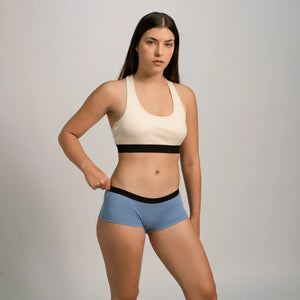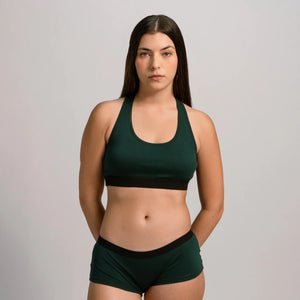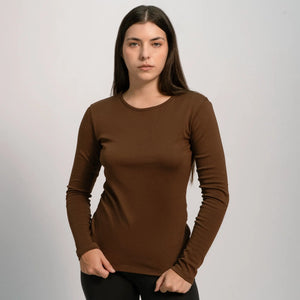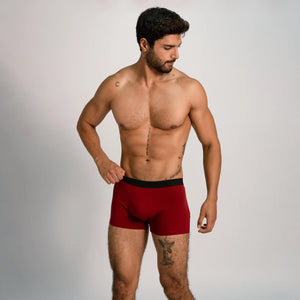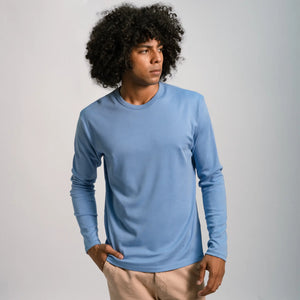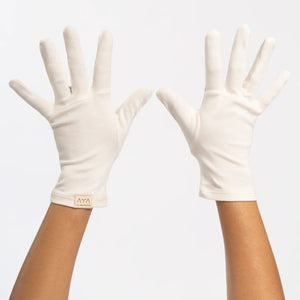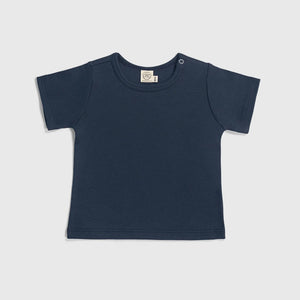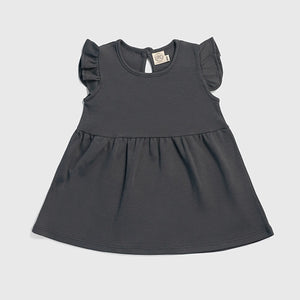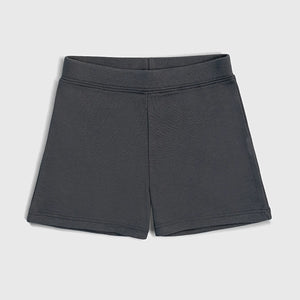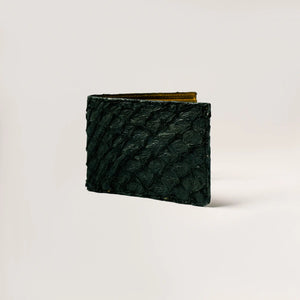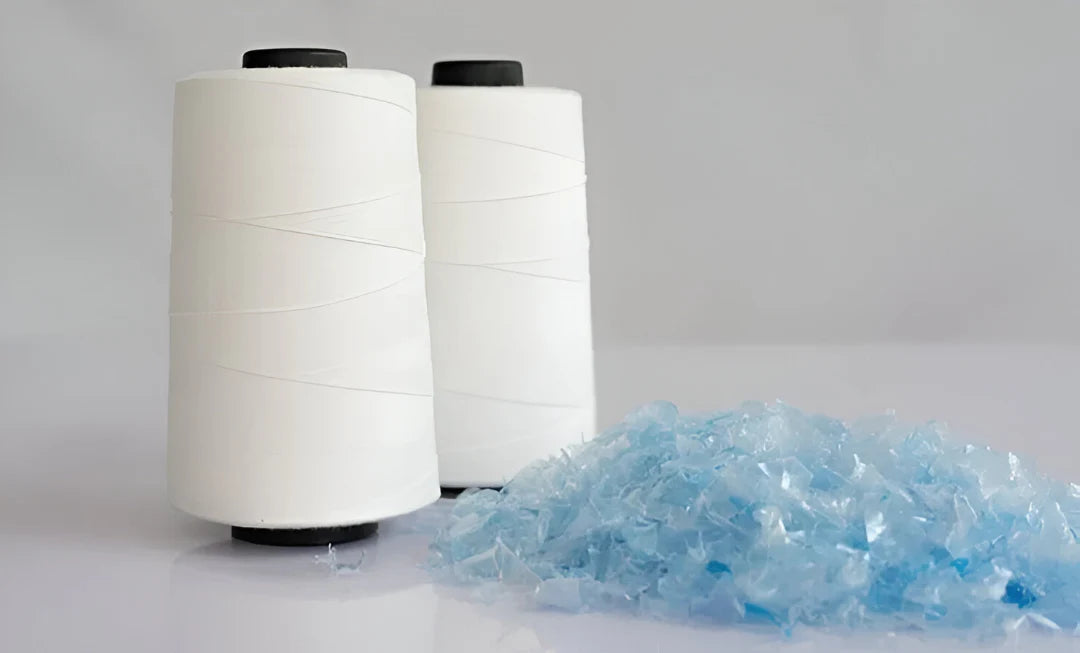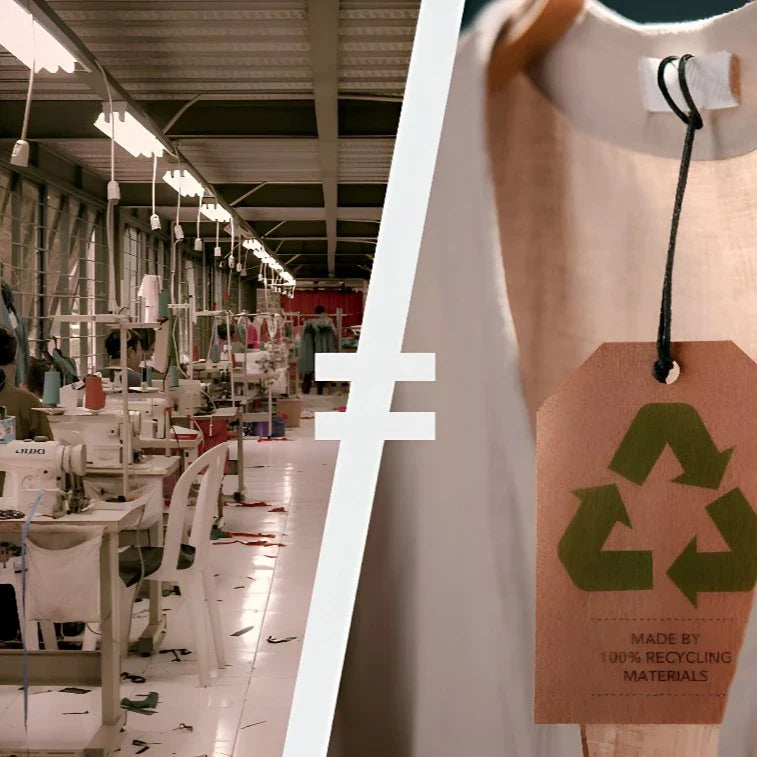Fashion’s Resources:
How Sustainable Are They?
.
AYA | MARCH 19, 2025
READING TIME: 7 minutes
By Lesia Tello & Jordy Munarriz
AYA | MARCH 19, 2025
READING TIME: 7 minutes
By Lesia Tello & Jordy Munarriz
What is Sustainability in Clothing Manufacturing?
Sustainability is defined as “development that meets the needs of the present without compromising the ability of future generations to meet their own needs” [1]. In the context of clothing manufacturing, this means designing, producing, and distributing apparel with minimal environmental harm, responsible resource use, and ethical labor practices.
Unlike conventional manufacturing—often associated with high energy consumption, chemical-intensive processes, and excessive waste—sustainable clothing production prioritizes efficiency, transparency, and pollution reduction (see the following comparison table).
The industry’s reliance on natural and synthetic resources raises critical questions about sustainability. As consumer awareness grows, fashion brands are facing increasing pressure to ensure ethical sourcing, responsible production, and transparency in their supply chains [2].
Comparison Table: Conventional vs. Sustainable Manufacturing Practices [3,4]
| Aspect | Conventional Industrial Manufacturers | Sustainable Manufacturers |
|---|---|---|
| Energy Consumption | High, primarily from non-renewable sources like coal and fossil fuels. | Utilizes renewable energy sources and energy-efficient technologies. |
| Water Usage | Heavy water usage and chemical pollution in textile wet processing. | Eco-friendly wet processing methods and water recycling. |
| Waste Generation | High solid waste during yarn, fabric, and clothing manufacturing. | Focus on waste reduction, recycling, and circular economy principles. |
| Chemical Usage | Extensive use of harmful chemicals in dyes and finishes. | Adoption of natural dyes and non-toxic finishing methods. |
| Carbon Emissions | High due to long supply chains and energy-intensive processes. | Reduced carbon footprint through local production and cleaner energy. |
| Labor Practices | Often criticized for poor working conditions and unethical labor practices. | Emphasis on ethical labor standards and fair wages. |
| Costs | Lower costs due to mass production and cheaper, conventional materials. | Higher costs due to eco-friendly materials, ethical labor practices, and sustainable processes. |
| Product Durability | Typically high due to synthetic fibers and chemical treatments designed to enhance longevity. | Lower durability in some natural composition. But reduced washing frequency prolongs product life for alpaca wool. |
| Availability | High availability and accessibility due to established supply chains and mass production. | Limited availability due to resource scarcity and smaller-scale production. |
Key Sustainable Practices in Clothing Manufacturing
As fashion’s environmental footprint becomes impossible to ignore, manufacturers are adopting resource-conscious strategies to reduce waste, conserve energy, and limit pollution. But are these measures truly enough to transform an industry built on overproduction?
Use of Sustainable Materials
Sustainable manufacturers are prioritizing raw materials with lower environmental footprints and integrating circular economy principles.

Processing natural fibers in a textile facility, where raw materials are prepared for sustainable fabric production.
Organic Cotton
Grown without pesticides or synthetic fertilizers, organic cotton conserves soil health, reduces water contamination, and supports biodiversity [5,6]. Compared to conventional cotton, organic cultivation significantly reduces water usage—by up to 91%—making it a more sustainable choice [7]. Brands like Patagonia utilize GOTS-certified organic cotton, ensuring responsible agricultural practices [5,6,8]. However, its lower yield and higher cost compared to conventional cotton remain challenges for widespread adoption.
Alpaca Wool
Alpaca wool stands out as one of the most sustainable natural fibers due to its minimal environmental impact [9,10]. Alpacas have gentle grazing habits that preserve soil health, and their wool is naturally thermoregulating, hypoallergenic, lightweight, and moisture-wicking [9,10,11,12,13]. Additionally, alpaca fibers have antimicrobial properties, making them resistant to odors and requiring fewer washes than other natural fibers [14].
Bamboo
Bamboo is known for its rapid growth and renewability, requiring minimal water and pesticides. It also produces more oxygen and contributes to carbon sequestration by absorbing more carbon dioxide than conventional trees [8,15,16]. However, bamboo’s sustainability is highly dependent on processing methods. Mechanically processed bamboo retains its eco-friendly qualities, but chemical processing—commonly used for producing bamboo viscose—can negate its environmental benefits due to the use of toxic solvents [17].
Recycled and Upcycled Textiles
Recycled polyester & nylon, made from plastic waste, significantly reduce dependence on virgin fossil fuels. Brands like American Apparel and Adidas integrate these materials into their product lines [2,8,4]. Upcycling, on the other hand, repurposes pre-consumer textile waste (e.g., fabric scraps) into new garments, minimizing landfill contributions [2].
While recycling and upcycling contribute to waste reduction, they are often criticized for perpetuating the linear economy model. Relying solely on recycling without addressing overconsumption may not lead to long-term sustainability [7].
Eco-Conscious Dyeing & Textile Processing
Dyeing and finishing processes are some of the most polluting stages in textile manufacturing, often involving toxic chemicals and high water consumption. In response, sustainable manufacturers are embracing eco-conscious dyeing techniques to reduce environmental harm.
Natural Dyes: A Return to Traditional Methods
Derived from plants, minerals, and insects, natural dyes offer a biodegradable, non-toxic alternative to synthetic colorants. Common sources include indigo (blue), cochineal (red), turmeric (yellow), and madder (orange and red hues) [3]. By avoiding heavy metals and petrochemicals, natural dyes significantly reduce environmental toxicity.

Organic indigo dye extraction process.
Waterless Dyeing Technologies
Innovative technologies like CO₂ dyeing (DyeCoo) and Air Dye drastically reduce water usage and pollution by using pressurized CO₂ or air for dyeing processes. These methods eliminate wastewater and minimize chemical use, offering a more sustainable alternative to conventional dyeing [18].
While waterless dyeing is environmentally advantageous, the high cost of machinery and technology access remains a barrier for small-scale manufacturers.
Ozone Washing: A Sustainable Alternative for Denim
Primarily used in denim production, ozone washing reduces water and chemical usage while achieving the desired faded look. This technique eliminates harmful bleaches and increases dye uptake efficiency to 98%, while cutting chemical consumption by up to 50% compared to traditional methods [18]. This technique exemplifies how sustainable innovation can maintain product aesthetics without environmental compromise. A prime example is Levi’s Water<Less™ technology, which incorporates ozone washing, nanobubble application, and reduced rinsing cycles to minimize water consumption. This innovation has allowed Levi’s to cut water use by up to 96% in denim finishing processes—a significant step toward reducing fashion’s water footprint [19].
Primarily used in denim production, ozone washing reduces water and chemical usage while achieving the desired faded look. This technique eliminates harmful bleaches and increases dye uptake efficiency to 98%, while cutting chemical consumption by up to 50% compared to traditional methods [18]. This technique exemplifies how sustainable innovation can maintain product aesthetics without environmental compromise. A prime example is Levi’s Water<Less™ technology, which incorporates ozone washing, nanobubble application, and reduced rinsing cycles to minimize water consumption. This innovation has allowed Levi’s to cut water use by up to 96% in denim finishing processes—a significant step toward reducing fashion’s water footprint [19].
Is it feasible for the fashion industry to fully transition to these sustainable dyeing methods, or will conventional practices continue to dominate?


Above: An ozone washing machine used in denim manufacturing, designed to reduce water and chemical consumption in the finishing process. Down: A pair of jeans faded using ozone treatment, achieving a worn-in look while minimizing environmental impact. Image extracted from Nayak et al. (2024) [3].
On the left: An ozone washing machine used in denim manufacturing, designed to reduce water and chemical consumption in the finishing process. On the right: A pair of jeans faded using ozone treatment, achieving a worn-in look while minimizing environmental impact. Image extracted from Nayak et al. (2024) [3].
Changing Demographics and Preferences
The pandemic also highlighted shifting demographics in the fashion market. Younger consumers, particularly Gen Z and Millennials, became increasingly influential in shaping purchasing trends. Research from the Institute for Sustainable Fashion indicates that younger generations are more likely to support sustainable brands, with 83% of Millennials stating they prefer to buy from companies that share their values [7,8].
Moreover, with the rise of remote work, many consumers reported a preference for comfort over style. A study published in the Journal of Fashion Marketing and Management noted that comfort became the primary driver of clothing purchases for many consumers, with 65% prioritizing comfort in their buying decisions [9]. This trend is likely to persist as remote work becomes a more permanent aspect of many industries.

Changing Demographics and Preferences
The pandemic also highlighted shifting demographics in the fashion market. Younger consumers, particularly Gen Z and Millennials, became increasingly influential in shaping purchasing trends. Research from the Institute for Sustainable Fashion indicates that younger generations are more likely to support sustainable brands, with 83% of Millennials stating they prefer to buy from companies that share their values [7,8].
Moreover, with the rise of remote work, many consumers reported a preference for comfort over style. A study published in the Journal of Fashion Marketing and Management noted that comfort became the primary driver of clothing purchases for many consumers, with 65% prioritizing comfort in their buying decisions [9]. This trend is likely to persist as remote work becomes a more permanent aspect of many industries.

Changing Demographics and Preferences
The pandemic also highlighted shifting demographics in the fashion market. Younger consumers, particularly Gen Z and Millennials, became increasingly influential in shaping purchasing trends. Research from the Institute for Sustainable Fashion indicates that younger generations are more likely to support sustainable brands, with 83% of Millennials stating they prefer to buy from companies that share their values [7,8].
Moreover, with the rise of remote work, many consumers reported a preference for comfort over style. A study published in the Journal of Fashion Marketing and Management noted that comfort became the primary driver of clothing purchases for many consumers, with 65% prioritizing comfort in their buying decisions [9]. This trend is likely to persist as remote work becomes a more permanent aspect of many industries.

Changing Demographics and Preferences
The pandemic also highlighted shifting demographics in the fashion market. Younger consumers, particularly Gen Z and Millennials, became increasingly influential in shaping purchasing trends. Research from the Institute for Sustainable Fashion indicates that younger generations are more likely to support sustainable brands, with 83% of Millennials stating they prefer to buy from companies that share their values [7,8].
Moreover, with the rise of remote work, many consumers reported a preference for comfort over style. A study published in the Journal of Fashion Marketing and Management noted that comfort became the primary driver of clothing purchases for many consumers, with 65% prioritizing comfort in their buying decisions [9]. This trend is likely to persist as remote work becomes a more permanent aspect of many industries.

Energy Efficiency and Carbon Emission Reduction
The fashion industry contributes nearly 10% of global carbon emissions [4]. To combat this, manufacturers are adopting energy-efficient systems and renewable energy sources.
Renewable Energy in Manufacturing
Many manufacturers are transitioning to solar, wind, and biomass energy to power their factories, reducing reliance on fossil fuels and lowering carbon emissions [3]. However, implementing renewable energy systems requires significant upfront investment and infrastructure, limiting accessibility for smaller brands.
Automation and Robotics in Textile Production
Automation and robotics enhance productivity while optimizing energy use and minimizing technologies like AI-assisted material handling and robotic sewing improve efficiency and reduce fabric waste [3]. Yet, increased automation raises ethical concerns about job displacement.
Proximity Manufacturing: A Low-Carbon Alternative
Producing garments closer to the consumer markets significantly reduces transportation-related carbon emissions while supporting local economies [4]. This approach aligns with the growing trend of localized production and on-demand manufacturing.
While these innovations effectively reduce emissions, the industry's reliance on energy-intensive processes remains a challenge. Can renewable energy and advanced technologies truly decarbonize the fashion industry?
Water Management and Waste Recycling
Water scarcity is a growing crisis, and the textile industry remains one of the largest water consumers and polluters.
Waterless Dyeing & Wastewater Recycling
- Waterless dyeing (DyeCoo, Air Dye) eliminates wastewater, reducing pollution [8].
- Wastewater recycling allows manufacturers to reuse water in production cycles, cutting freshwater consumption and environmental contamination [8].
Zero-Waste Design & Circular Fashion
- Zero-waste pattern cutting minimizes fabric scraps during garment production.
- Circular design promotes repairability, recycling, and garment longevity, aligning with a closed-loop fashion system [6].
While these efforts help, critics argue that true sustainability requires deeper systemic change, not just technological fixes.

Deposits of residual textile fibers destined for recycling processes.
Can the Fashion Industry Truly Become Sustainable?
The road to sustainable clothing manufacturing is complex. While brands like Patagonia, Levi’s, and Adidas are pioneering change, greenwashing remains a major concern. The industry must go beyond marketing claims and adopt genuine circular economy models to achieve long-term sustainability.
The Power of Consumer Choice
Consumers play a critical role in driving demand for ethical fashion. By choosing sustainable materials, supporting transparent brands, and rejecting fast fashion, we can collectively reshape the fashion industry’s environmental impact.
Are brands truly committed to sustainability, or are they just capitalizing on the trend? The responsibility doesn’t just lie with manufacturers—it lies with all of us.

Glossarykeywords
Air Dye:
A waterless dyeing technology that uses air to apply color to textiles, eliminating wastewater and reducing chemical use.
Automation in Textile Production:
The use of AI, robotics, and machine learning to improve efficiency, reduce waste, and lower production costs in the fashion industry.
Carbon Emissions:
Greenhouse gases, particularly carbon dioxide (CO₂), released by industrial processes, transportation, and manufacturing, contributing to climate change.
Circular Economy:
A production and consumption model that minimizes waste and maximizes resource efficiency by designing products for durability, reuse, repair, and recycling.
CO₂ Dyeing (DyeCoo):
A sustainable dyeing technology that uses pressurized carbon dioxide instead of water, significantly reducing water waste and pollution.
Ethical Fashion:
Clothing produced in a way that considers the welfare of workers, animals, and the environment, ensuring fair wages and responsible sourcing.
Fast Fashion:
A mass production model that delivers low-cost, trend-based clothing at high speed, often leading to waste, environmental pollution, and unethical labor practices.
GOTS (Global Organic Textile Standard):
A leading certification for organic textiles that ensures responsible farming practices, sustainable processing, and fair labor conditions.
Greenwashing:
A misleading marketing strategy used by companies to appear more environmentally friendly than they actually are, often exaggerating sustainability claims.
Nanobubble Technology:
A textile treatment method that applies chemicals and dyes using microscopic bubbles, reducing water and chemical usage.
Natural Dyes:
Dyes derived from plants, minerals, or insects that are biodegradable and free from toxic chemicals, unlike synthetic dyes.
Ozone Washing:
A low-impact textile treatment that uses ozone gas instead of chemicals and water to bleach or fade denim, reducing pollution and water consumption.
Proximity Manufacturing:
The practice of producing garments close to consumer markets, reducing transportation-related carbon emissions and promoting local economies.
Recycled Polyester (rPET):
Polyester made from post-consumer plastic waste (e.g., bottles), reducing dependence on virgin petroleum-based fibers.
Slow Fashion:
A movement opposing fast fashion, focusing on sustainable, high-quality, and ethically made clothing that lasts longer.
Sustainable Fashion:
Clothing designed and manufactured with minimal environmental and social impact, using eco-friendly materials and ethical labor practices.
Upcycling:
The creative reuse of materials or textiles to create new products of equal or higher value, reducing waste without breaking down fibers.
Wastewater Recycling:
The treatment and reuse of water in textile production, minimizing freshwater consumption and reducing pollution.
Zero-Waste Design:
A fashion design approach that maximizes fabric efficiency, ensuring that no textile scraps go to waste during the cutting and sewing process.
Authors & Researchers

Jordy Munarriz
Environmental Engineer with a master's degree in renewable energy and a specialization in sustainability. Researcher and writer, he combines his technical knowledge with his passion for environmental communication, addressing topics of ecological impact and sustainable solutions in the textile industry and beyond.

Lesia Tello
Biologist and researcher specializing in biochemistry, with a master’s degree in education. Passionate about scientific inquiry, she explores the complexities of life and the processes that sustain it. Her work focuses on the intersection of science, education, and communication, making scientific knowledge accessible and impactful.
Authors & Researchers
Authors & Researchers


Jordy Munarriz
Environmental Engineer with a master's degree in renewable energy and a specialization in sustainability. Researcher and writer, he combines his technical knowledge with his passion for environmental communication, addressing topics of ecological impact and sustainable solutions in the textile industry and beyond.
Lesia Tello
Biologist and researcher specializing in biochemistry, with a master’s degree in education. Passionate about scientific inquiry, she explores the complexities of life and the processes that sustain it. Her work focuses on the intersection of science, education, and communication, making scientific knowledge accessible and impactful.
References:
[1] Brundtland, G.H. (1987), “Our common future”, Report of the World Commission on Environment and Development, available at: www.un-documents.net/ocf-01.htm
[2] Goworek, H., Fisher, T., Cooper, T., Woodward, S., & Hiller, A. (2012). The sustainable clothing market: an evaluation of potential strategies for UK retailers. International journal of retail & distribution management, 40(12), 935-955. https://doi.org/10.1108/09590551211274937
[3] Nayak, R., Panwar, T., Grover, T., & Singh, A. (2024). Recent trends in sustainable clothing and textile manufacturing. In Sustainable Manufacturing Practices in the Textiles and Fashion Sector (pp. 75-93). Cham: Springer Nature Switzerland. https://link.springer.com/chapter/10.1007/978-3-031-51362-6_4
[4] Roy, R., Chavan, P. P., Rajeev, Y., Praveenraj, T., & Kolazhi, P. (2024). Sustainable manufacturing practices in textiles and fashion. In Sustainable Manufacturing Practices in the Textiles and Fashion Sector (pp. 1-22). Cham: Springer Nature Switzerland. https://doi.org/10.1007/978-3-031-51362-6
[5] Harris, F., Roby, H., & Dibb, S. (2016). Sustainable clothing: challenges, barriers and interventions for encouraging more sustainable consumer behaviour. International Journal of Consumer Studies, 40(3), 309-318. https://doi.org/10.1111/ijcs.12257
[6] Niinimäki, K., & Hassi, L. (2011). Emerging design strategies in sustainable production and consumption of textiles and clothing. Journal of cleaner production, 19(16), 1876-1883. https://doi.org/10.1016/j.jclepro.2011.04.020
[7] Delate, K., Heller, B., & Shade, J. (2021). Organic cotton production may alleviate the environmental impacts of intensive conventional cotton production. Renewable Agriculture and Food Systems, 36(4), 405–412. doi:https://doi.org/10.1017/S1742170520000356
[8] Islam, M. M., Perry, P., & Gill, S. (2021). Mapping environmentally sustainable practices in textiles, apparel and fashion industries: a systematic literature review. Journal of Fashion Marketing and Management: An International Journal, 25(2), 331-353. https://www.emerald.com/insight/content/doi/10.1108/jfmm-07-2020-0130/full/html
[9] Moulton, L. (2024). The Emergence of the Peruvian Alpaca Industry in American Markets.
[10] Doyle, E. K., Preston, J. W., McGregor, B. A., & Hynd, P. I. (2021). The science behind the wool industry. The importance and value of wool production from sheep. Animal Frontiers, 11(2), 15-23.
[11] Li, Y., Holcombe, B. V., & Apcar, F. (1992). Moisture buffering behavior of hygroscopic fabric during wear. Textile research journal, 62(11), 619-627.
[12] Karthik, T., Rathinamoorthy, R., & Ganesan, P. (2015). Sustainable luxury natural fibers—production, properties, and prospects. Handbook of Sustainable Luxury Textiles and Fashion: Volume 1, 59-98.
[13] Bartl, K., Mogrovejo, P., Dueñas, A., & Quispe, I. (2023). Cradle-to-grave environmental analysis of an alpaca fiber sweater produced in Peru. Science of The Total Environment, 905, 167023.
[14] Jayalakshmi, I. (2024). Wool–Beyond Fashion Exploring Its Applications in Sustainable Textile Innovations and Functional Fabrics. Illustrating Digital Innovations Towards Intelligent Fashion: Leveraging Information System Engineering and Digital Twins for Efficient Design of Next-Generation Fashion, 305-330.
[15] Chaturvedi K, Singhwane A, Dhangar M, Mili M, Gorhae N, Naik A, Prashant N, Srivastava AK, Verma S. (2024). Bamboo for producing charcoal and biochar for versatile applications. Biomass Conversion and Biorefinery, 14(14), 15159-15185. doi: 10.1007/s13399-022-03715-3
[16] Pan, C., Zhou, G., Shrestha, A. K., Chen, J., Kozak, R., Li, N., Li, J., He, Y., Sheng, C., & Wang, G. (2023). Bamboo as a Nature-Based Solution (NbS) for Climate Change Mitigation: Biomass, Products, and Carbon Credits. Climate, 11(9), 175. https://doi.org/10.3390/cli11090175
[17] Amjad, A. I. (2024). Bamboo fibre: A sustainable solution for textile manufacturing. Advances in Bamboo Science, 100088. https://doi.org/10.1016/j.bamboo.2024.100088
[18] Jobber, D. (2006), Principles and Practice of Marketing, 5th ed., McGraw-Hill, Maidenhead.
[19] Sirilertsuwan, P., Ekwall, D., & Hjelmgren, D. (2018). Proximity manufacturing for enhancing clothing supply chain sustainability. The International Journal of Logistics Management, 29(4), 1346-1378. https://doi.org/10.1108/IJLM-09-2017-0233
Glossarykeywords
Air Dye:
A waterless dyeing technology that uses air to apply color to textiles, eliminating wastewater and reducing chemical use.
Automation in Textile Production:
The use of AI, robotics, and machine learning to improve efficiency, reduce waste, and lower production costs in the fashion industry.
Carbon Emissions:
Greenhouse gases, particularly carbon dioxide (CO₂), released by industrial processes, transportation, and manufacturing, contributing to climate change.
Circular Economy:
A production and consumption model that minimizes waste and maximizes resource efficiency by designing products for durability, reuse, repair, and recycling.
CO₂ Dyeing (DyeCoo):
A sustainable dyeing technology that uses pressurized carbon dioxide instead of water, significantly reducing water waste and pollution.
Ethical Fashion:
Clothing produced in a way that considers the welfare of workers, animals, and the environment, ensuring fair wages and responsible sourcing.
Fast Fashion:
A mass production model that delivers low-cost, trend-based clothing at high speed, often leading to waste, environmental pollution, and unethical labor practices.
GOTS (Global Organic Textile Standard):
A leading certification for organic textiles that ensures responsible farming practices, sustainable processing, and fair labor conditions.
Greenwashing:
A misleading marketing strategy used by companies to appear more environmentally friendly than they actually are, often exaggerating sustainability claims.
Nanobubble Technology:
A textile treatment method that applies chemicals and dyes using microscopic bubbles, reducing water and chemical usage.
Natural Dyes:
Dyes derived from plants, minerals, or insects that are biodegradable and free from toxic chemicals, unlike synthetic dyes.
Ozone Washing:
A low-impact textile treatment that uses ozone gas instead of chemicals and water to bleach or fade denim, reducing pollution and water consumption.
Proximity Manufacturing:
The practice of producing garments close to consumer markets, reducing transportation-related carbon emissions and promoting local economies.
Recycled Polyester (rPET):
Polyester made from post-consumer plastic waste (e.g., bottles), reducing dependence on virgin petroleum-based fibers.
Slow Fashion:
A movement opposing fast fashion, focusing on sustainable, high-quality, and ethically made clothing that lasts longer.
Sustainable Fashion:
Clothing designed and manufactured with minimal environmental and social impact, using eco-friendly materials and ethical labor practices.
Upcycling:
The creative reuse of materials or textiles to create new products of equal or higher value, reducing waste without breaking down fibers.
Wastewater Recycling:
The treatment and reuse of water in textile production, minimizing freshwater consumption and reducing pollution.
Zero-Waste Design:
A fashion design approach that maximizes fabric efficiency, ensuring that no textile scraps go to waste during the cutting and sewing process.
References:
[1] Brundtland, G.H. (1987), “Our common future”, Report of the World Commission on Environment and Development, available at: www.un-documents.net/ocf-01.htm
[2] Goworek, H., Fisher, T., Cooper, T., Woodward, S., & Hiller, A. (2012). The sustainable clothing market: an evaluation of potential strategies for UK retailers. International journal of retail & distribution management, 40(12), 935-955. https://doi.org/10.1108/09590551211274937
[3] Nayak, R., Panwar, T., Grover, T., & Singh, A. (2024). Recent trends in sustainable clothing and textile manufacturing. In Sustainable Manufacturing Practices in the Textiles and Fashion Sector (pp. 75-93). Cham: Springer Nature Switzerland. https://link.springer.com/chapter/10.1007/978-3-031-51362-6_4
[4] Roy, R., Chavan, P. P., Rajeev, Y., Praveenraj, T., & Kolazhi, P. (2024). Sustainable manufacturing practices in textiles and fashion. In Sustainable Manufacturing Practices in the Textiles and Fashion Sector (pp. 1-22). Cham: Springer Nature Switzerland. https://doi.org/10.1007/978-3-031-51362-6
[5] Harris, F., Roby, H., & Dibb, S. (2016). Sustainable clothing: challenges, barriers and interventions for encouraging more sustainable consumer behaviour. International Journal of Consumer Studies, 40(3), 309-318. https://doi.org/10.1111/ijcs.12257
[6] Niinimäki, K., & Hassi, L. (2011). Emerging design strategies in sustainable production and consumption of textiles and clothing. Journal of cleaner production, 19(16), 1876-1883. https://doi.org/10.1016/j.jclepro.2011.04.020
[7] Delate, K., Heller, B., & Shade, J. (2021). Organic cotton production may alleviate the environmental impacts of intensive conventional cotton production. Renewable Agriculture and Food Systems, 36(4), 405–412. doi:https://doi.org/10.1017/S1742170520000356
[8] Islam, M. M., Perry, P., & Gill, S. (2021). Mapping environmentally sustainable practices in textiles, apparel and fashion industries: a systematic literature review. Journal of Fashion Marketing and Management: An International Journal, 25(2), 331-353. https://www.emerald.com/insight/content/doi/10.1108/jfmm-07-2020-0130/full/html
[9] Moulton, L. (2024). The Emergence of the Peruvian Alpaca Industry in American Markets.
[10] Doyle, E. K., Preston, J. W., McGregor, B. A., & Hynd, P. I. (2021). The science behind the wool industry. The importance and value of wool production from sheep. Animal Frontiers, 11(2), 15-23.
[11] Li, Y., Holcombe, B. V., & Apcar, F. (1992). Moisture buffering behavior of hygroscopic fabric during wear. Textile research journal, 62(11), 619-627.
[12] Karthik, T., Rathinamoorthy, R., & Ganesan, P. (2015). Sustainable luxury natural fibers—production, properties, and prospects. Handbook of Sustainable Luxury Textiles and Fashion: Volume 1, 59-98.
[13] Bartl, K., Mogrovejo, P., Dueñas, A., & Quispe, I. (2023). Cradle-to-grave environmental analysis of an alpaca fiber sweater produced in Peru. Science of The Total Environment, 905, 167023.
[14] Jayalakshmi, I. (2024). Wool–Beyond Fashion Exploring Its Applications in Sustainable Textile Innovations and Functional Fabrics. Illustrating Digital Innovations Towards Intelligent Fashion: Leveraging Information System Engineering and Digital Twins for Efficient Design of Next-Generation Fashion, 305-330.
[15] Chaturvedi K, Singhwane A, Dhangar M, Mili M, Gorhae N, Naik A, Prashant N, Srivastava AK, Verma S. (2024). Bamboo for producing charcoal and biochar for versatile applications. Biomass Conversion and Biorefinery, 14(14), 15159-15185. doi: 10.1007/s13399-022-03715-3
[16] Pan, C., Zhou, G., Shrestha, A. K., Chen, J., Kozak, R., Li, N., Li, J., He, Y., Sheng, C., & Wang, G. (2023). Bamboo as a Nature-Based Solution (NbS) for Climate Change Mitigation: Biomass, Products, and Carbon Credits. Climate, 11(9), 175. https://doi.org/10.3390/cli11090175
[17] Amjad, A. I. (2024). Bamboo fibre: A sustainable solution for textile manufacturing. Advances in Bamboo Science, 100088. https://doi.org/10.1016/j.bamboo.2024.100088
[18] Jobber, D. (2006), Principles and Practice of Marketing, 5th ed., McGraw-Hill, Maidenhead.
1
[19] Sirilertsuwan, P., Ekwall, D., & Hjelmgren, D. (2018). Proximity manufacturing for enhancing clothing supply chain sustainability. The International Journal of Logistics Management, 29(4), 1346-1378. https://doi.org/10.1108/IJLM-09-2017-0233
You don't have to put all the weight on your shoulders. Every action counts. At AYA, we fight microplastic pollution by making a 100% plastic-free catalog.
Visit Our Shop →You May Also Like to Read...
The Truth About Recycled Polyester in Fashion
Discover the hidden costs of recycled polyester. Learn why rPET isn't as sustainable as it seems and what real circular alternatives look like.
Synthetic Fabrics vs. Organic Cotton: Impact on Skin Health
Discover how polyester and other synthetic fabrics can irritate your skin and why organic cotton, especially Pima cotton, is a healthier and safer choice for sensitive skin.
What Peru Whispers: Organic Pima Cotton Grown with Tradition and Care
In the quiet corners of Peru, organic pima cotton is grown with respect for the land. A luxurious, timeless textile waiting to be discovered.
Why Sustainable Fashion Shouldn’t Be Fast Fashion
Recycled materials and green labels won’t fix fast fashion. Discover why real sustainability means slowing down.
